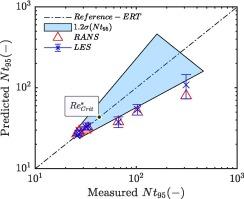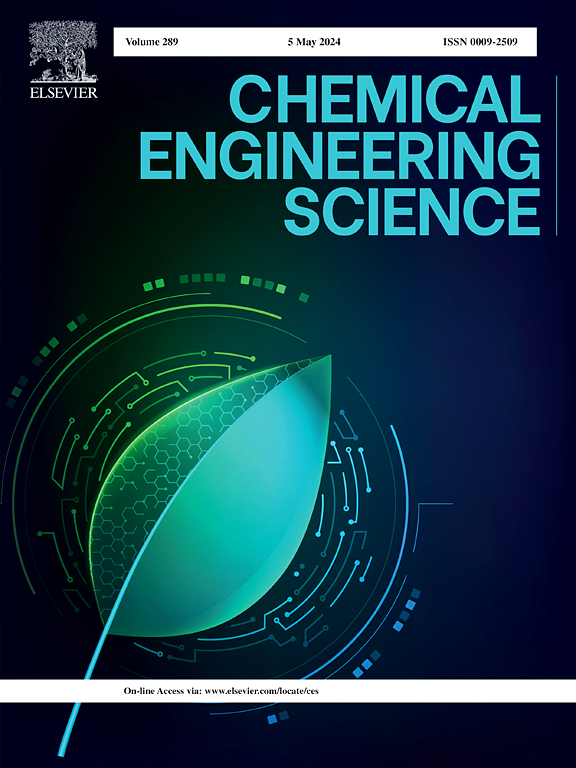A numerical study on the mixing time prediction of miscible liquids with high viscosity ratios in turbulently stirred vessels
IF 4.1
2区 工程技术
Q2 ENGINEERING, CHEMICAL
引用次数: 0
Abstract
Mixing processes are crucial in industrial applications, including food, pharmaceutical, and chemical manufacturing, to ensure product homogeneity and quality control. Effective control of high-viscosity fluid mixing is essential due to intricate mixing dynamics involved. This study evaluates blending time predictions from two Computational Fluid Dynamics (CFD) methodologies for simulating the mixing of two miscible liquids with high contrasting viscosities. The investigation employed a scalar transport model coupled with a Reynolds-Averaged Navier-Stokes (RANS) Finite Volume Method (FVM) solver and a Lattice Boltzmann Large Eddy Simulation (LB-LES) solver to assess flow parameters against experimental data. Blending times were validated against Electrical Resistance Tomography (ERT) based measurements in a 2.6-litre baffled vessel agitated by a Rushton turbine under turbulent conditions. Results indicated both models align closely with experimental trends of dimensionless blending time relative to fluid properties; however, accuracy reduced as viscosity ratios exceeded a critical Reynolds number threshold.


关于高粘度比混和液体在湍流搅拌容器中的混合时间预测的数值研究
在食品、制药和化学制造等工业应用中,混合过程对于确保产品均匀性和质量控制至关重要。由于涉及复杂的混合动力学,有效控制高粘度流体混合至关重要。本研究评估了两种计算流体动力学(CFD)方法对两种高粘度混溶液体混合的混合时间预测。调查采用了标量传输模型,并结合雷诺平均纳维-斯托克斯(RANS)有限体积法(FVM)求解器和晶格玻尔兹曼大涡模拟(LB-LES)求解器,根据实验数据评估流动参数。在一个由 Rushton 涡轮在湍流条件下搅拌的 2.6 升挡板容器中,根据基于电阻断层扫描 (ERT) 的测量结果对混合时间进行了验证。结果表明,这两种模型都与流体特性相关的无量纲混合时间的实验趋势密切吻合;但是,当粘度比超过临界雷诺数阈值时,精确度就会降低。
本文章由计算机程序翻译,如有差异,请以英文原文为准。
求助全文
约1分钟内获得全文
求助全文
来源期刊

Chemical Engineering Science
工程技术-工程:化工
CiteScore
7.50
自引率
8.50%
发文量
1025
审稿时长
50 days
期刊介绍:
Chemical engineering enables the transformation of natural resources and energy into useful products for society. It draws on and applies natural sciences, mathematics and economics, and has developed fundamental engineering science that underpins the discipline.
Chemical Engineering Science (CES) has been publishing papers on the fundamentals of chemical engineering since 1951. CES is the platform where the most significant advances in the discipline have ever since been published. Chemical Engineering Science has accompanied and sustained chemical engineering through its development into the vibrant and broad scientific discipline it is today.
 求助内容:
求助内容: 应助结果提醒方式:
应助结果提醒方式:


